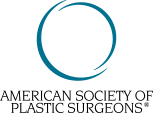There are two types of breast implants currently available in the United States – saline filled implants and silicone gel filled implants. Saline filled implants have a silicone shell and are filled with salt water (saline). They are inserted into the breast pocket empty and filled with saline in the operating room. They can be inserted through a very small incision. Because they are filled in surgery, small adjustments in implant fill volume can be made to correct small differences in breast size. Although they don’t feel as much like breast tissue as silicone implants, when placed in a pocket below the pectoralis (chest) muscle, they usually feel quite natural.
ADDITIONAL ADVANTAGES OF SALINE IMPLANTS:
Many women find peace of mind in knowing that if a saline implant leaks, they will be aware of it right away. In addition, if the saltwater leaks out of the implant, it will be safely absorbed by the body and eliminated like a glass of water. Saline implants are also less expensive than silicone filled implants.
DISADVANTAGES OF SALINE IMPLANTS:
Many women find that saline implants don’t feel as natural as silicone filled implants. However, Dr. Weider places them beneath the pectoralis muscle, which makes the difference in “feel” much less noticeable. In addition, the saline implants are more prone to rippling than the silicone implants. Rippling means seeing visible ripples in the skin overlying parts of the breast. This is typically more of an issue for women who are very slender and have minimal breast tissue. Saline implants are also slightly more prone to leakage than silicone filled implants.
When you come in for your consultation, Dr. Weider will review the pros and cons of each implant type. He will review your exam and answer any questions that you have. He will also help you decide which implant type will be best for you. Please give Weider Plastic Surgery a call today at 972.430.9471 to set up your personal consultation.






